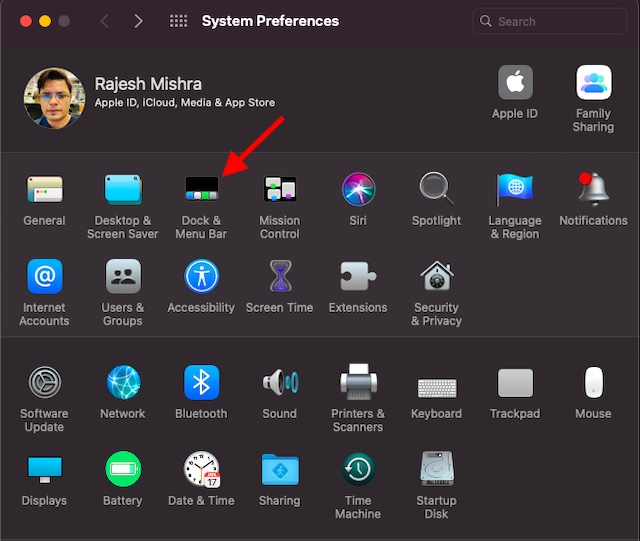BATTER-E Mac OS

Apple warns of supply shortages likely to impact iPad and Mac in Q3 Tim Cook says iPhone 12 is the most popular iPhone model, but Pro sales also ‘very Apple says 50% of Mac and iPad buyers. I have a 17' MBP at 10.4.8 and am having the same problem. Power off instead of sleep, discontinuity in%battery e.g. 90% -50% in seconds followed by power warning followed by power off (not sleep - have to power up restart after power down). But other times it seems ok. Original battery ( MacBook Pro 17' Mac OS X (10.4.8). E EGOWAY Laptop Battery Compatible with Mac Book Air 13 inch A1466 A1369 (2017, Early 2015, Early 2014, Mid 2013, Mid 2012, Mid 2011 and Late 2010 Version), fits A1377 A1405 A1496 1,111 $55 99. Mac Pro, Mac OS X (10.7.2) Posted on Nov 12, 2011 1:33 PM Reply I have this question too (23) I have this question too Me too (23) Me too.
With all our devices becoming wireless, it's getting more and more difficult to keep track of their battery levels. It's common to find that one of them is discharged right when you need it most simply because there is no easy way to monitor its battery status.
Batteries was designed to alleviate this issue by helping you track all your devices' charge levels from a single Mac. It works with any battery-powered Apple device, such as your MacBook, iPhone, iPad, keyboard, mouse, trackpad and AirPods. It allows you to monitor these devices' battery levels from the Notification Center, and it can even send low-battery alerts.
Sync battery level over Wi-Fi
The first thing you need to do is ensure your Mac receives battery info from your devices. On Mojave, this is done by enabling Wi-Fi sync in iTunes. On Catalina, you need to check the Show this device when on Wi-Fi option in Finder.
Once either of these steps is completed, the connected devices will now send battery information to your Mac when connected to the same network.
Monitor Apple devices' charge levels
After completing the configuration steps detailed above, you can launch Batteries and specify which devices should trigger notifications when their charge level drops below 20%. You can also disable notifications altogether.
Next, go ahead and add the Batteries widget to the Notification Center. From here, you can now keep an eye on each device's status and ensure you aren't caught by surprise when one of them needs to be recharged.
Monitor battery levels on a local network
Of course, this app won't be able to provide battery info for devices that aren't connected to the same network, but that's a limitation any developer would have a hard time getting around.

Batteries is a great tool if you have a bunch of devices connected to the same Wi-Fi network, either at work or at home. It will help you avoid those annoying moments when you realize your iPhone or AirPods are discharged right before you go out, and it is very simple to set up and use.
This article applies only to Mac computers with an Intel processor.
About the lithium-ion battery in your Mac notebook
Mac notebook batteries use lithium-ion technology. Lithium-ion batteries charge quickly, are long-lasting, and currently provide the best technology to power your computer.
All rechargeable batteries are consumable components that become less effective as they get older—and their age isn't determined only by time. A battery's lifespan depends on its chemical age, which is affected by factors such as its temperature history and charging pattern. As your notebook's battery ages chemically, its charging capacity gets smaller.
With these tips for maximizing battery performance, you can get the most out of all your Apple devices. And with battery health management, your Mac notebook can take battery optimization even further.
How battery health management helps
The battery health management feature in macOS 10.15.5 is designed to improve your battery's lifespan by reducing the rate at which it chemically ages. The feature does this by monitoring your battery's temperature history and its charging patterns.
Mac Os Versions
Based on the measurements that it collects, battery health management may reduce your battery's maximum charge when in this mode. This happens as needed to ensure that your battery charges to a level that's optimized for your usage—reducing wear on the battery, and slowing its chemical aging. Battery health management also uses the measurements to calculate when your battery needs service.
While battery health management benefits your battery's long-term lifespan, it can also reduce the amount of time your Mac runs on one battery charge when capacity limits are applied. If your priority is making your Mac notebook last as long as possible before recharging, you can turn the feature off.
When battery health management is turned on, your battery's maximum charging capacity might be limited. Although the feature is designed to improve your battery's lifespan, the limited maximum capacity might update your battery status menu to indicate a need for service. Your Mac calculates when to recommend service for your battery based on battery health management being continuously enabled.
How to control the battery health management feature
Battery health management is on by default when you buy a new Mac notebook with macOS 10.15.5 or later, or after you upgrade to macOS 10.15.5 or later on a Mac notebook with Thunderbolt 3 ports.
Battery-e Mac Os Update
If you want to turn off battery health management on a Mac notebook with an Intel processor, follow these steps:
- Choose System Preferences from the Apple menu , then click Battery.
- Click Battery in the sidebar, then click Battery Health.
- Deselect 'Manage battery longevity'.
- Click Turn Off, then click OK.
Note that turning this feature off might reduce your battery's lifespan.
Batter-e Mac Os Download
Learn more
If you feel that your battery isn't lasting as long as it should, you can learn about getting service for your Mac notebook.